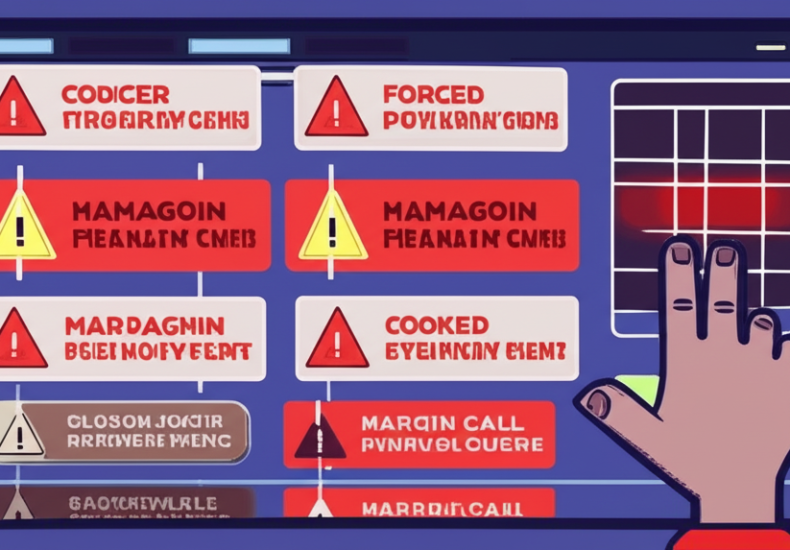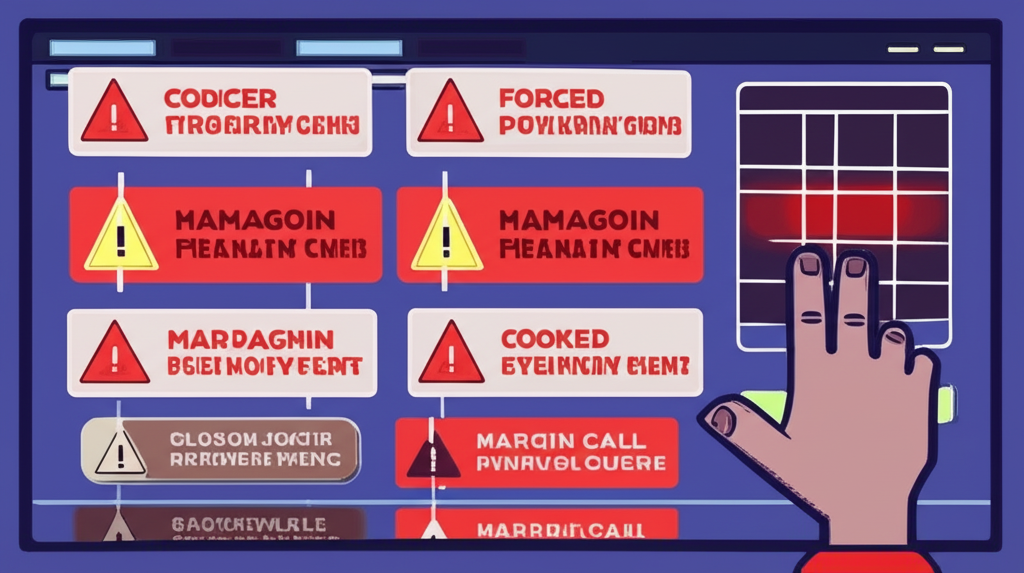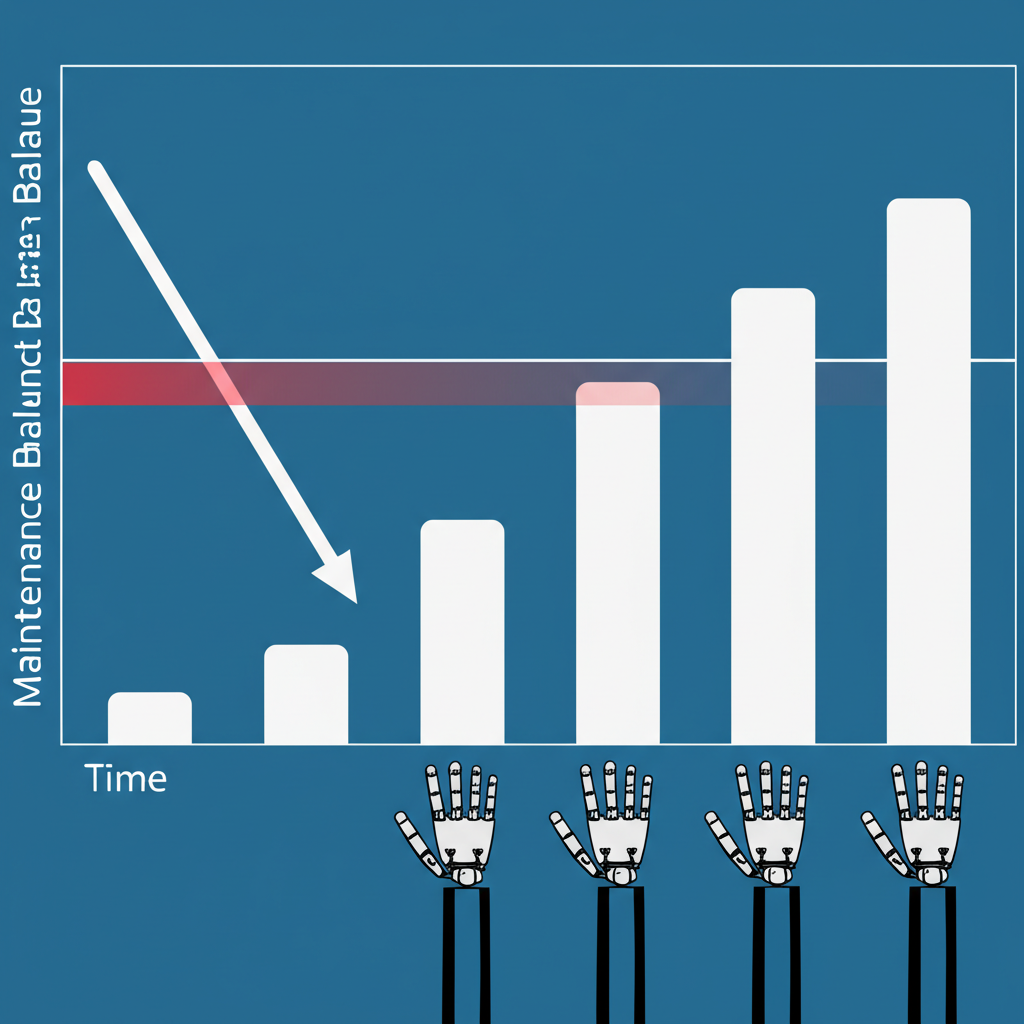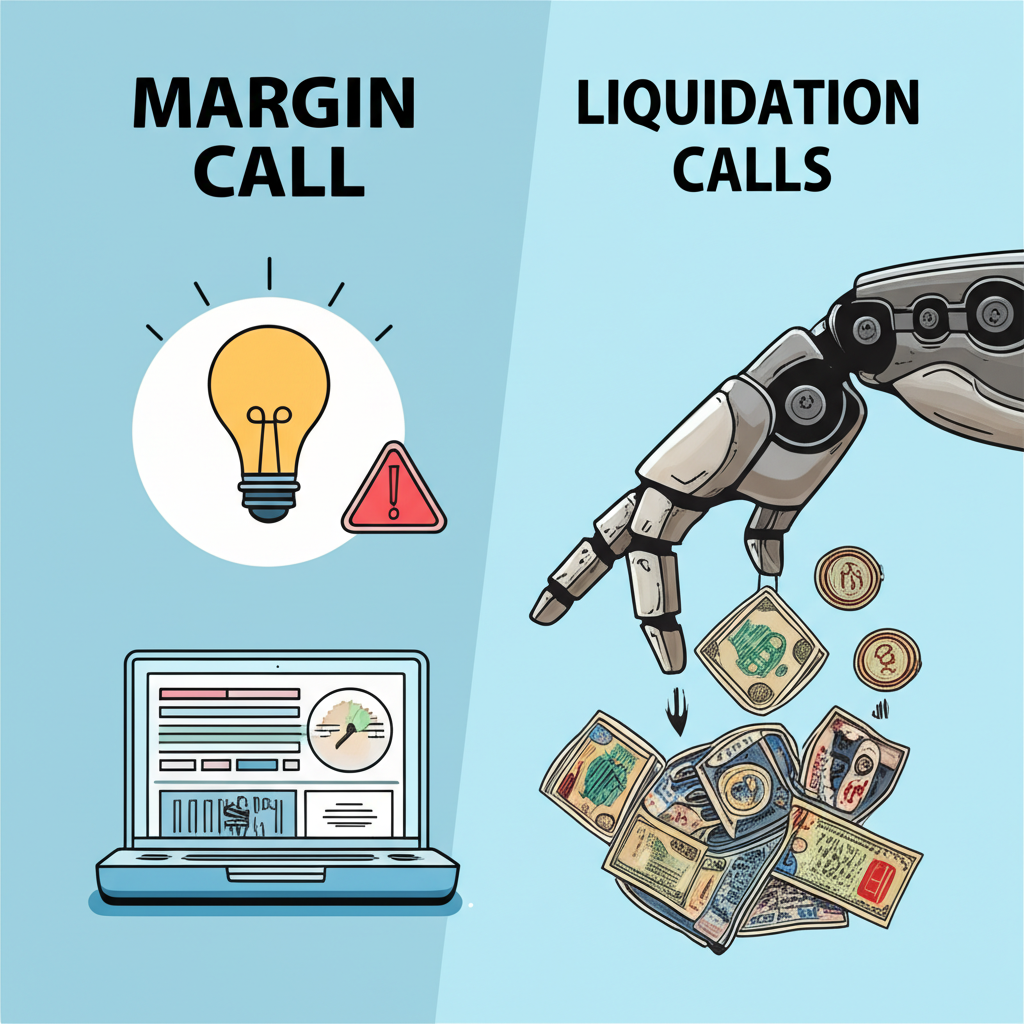
Margin Liquidation: What Triggers Forced Closures and 7 Proactive Strategies to Protect Your Capital
Table of Contents
ToggleWhat is Margin Liquidation? A Core Definition

Margin liquidation is the forced closure of a leveraged trading position initiated by a broker or exchange when a trader’s account equity drops below a critical level. This mechanism acts as a protective barrier for the platform, preventing it from absorbing losses caused by a trader’s deteriorating position. At its core, liquidation ensures that borrowed funds are recovered before losses escalate beyond the trader’s available collateral. While a margin call serves as a warning—urging the trader to add funds or reduce exposure—liquidation is the final step: an automatic execution that closes positions regardless of market conditions or personal strategy. This process, often referred to as “forced liquidation,” underscores the high-stakes nature of leveraged trading.
The Mechanics of Margin Liquidation: How It Works

Liquidation unfolds through a chain of events triggered by adverse price movements. It begins when a trader opens a leveraged position using initial margin—part of their own capital—while the rest is financed by the broker or exchange. As market prices shift, so does the value of the position and, consequently, the trader’s equity. The pivotal point comes when this equity dips below the maintenance margin requirement, a predefined minimum set by the platform.
At this stage, a margin call is typically issued, giving the trader a chance to respond. If they fail to act—either by depositing more funds or closing part of the position—and the market continues to move against them, equity may fall further to the liquidation threshold. Once reached, the system automatically steps in to close the position. This rapid intervention is especially common in volatile environments, where sharp drops in asset prices (for long positions) or sudden spikes (for short positions) can erode equity within seconds. The automation of this process ensures the platform limits its exposure, but it also means traders can lose their positions before they even realize what’s happening.
Margin Call vs. Margin Liquidation: Understanding the Critical Difference

The distinction between a margin call and margin liquidation is crucial for survival in leveraged markets. A margin call is not a penalty—it’s a final opportunity. It occurs when your account equity slips below the maintenance margin, signaling that your collateral is no longer sufficient to support your open positions. At this point, the broker alerts you, allowing time to deposit additional funds or reduce leverage manually. It’s a safety net, offering a moment to reassess and adjust.
Liquidation, in contrast, is the outcome when that window closes. Whether due to inaction, insufficient funds, or a market that moves too quickly, liquidation removes your control entirely. The platform takes over, selling assets at current market prices to reclaim the borrowed capital. You no longer decide when or how your trade ends. This loss of agency often results in suboptimal exit prices, amplifying losses. Recognizing this difference isn’t just academic—it’s the dividing line between regaining control and suffering irreversible damage.
Calculating Your Liquidation Price: A Trader’s Essential Skill

Knowing your liquidation price is not optional—it’s a fundamental survival skill in leveraged trading. This figure represents the exact market price at which your position will be automatically closed. While formulas vary slightly across platforms, the underlying principle is consistent: liquidation occurs when your equity can no longer satisfy the maintenance margin relative to your position size.
For a long position, a simplified version of the calculation considers entry price, leverage, and margin requirements. The formula can be expressed as:
Liquidation Price = Entry Price × [1 − (Initial Margin Ratio − Maintenance Margin Ratio) / Leverage]
To illustrate, imagine opening a $10,000 Bitcoin position with $2,000 of your own capital (5x leverage) at $10,000 per BTC. Your borrowed amount is $8,000. With a maintenance margin of 20%, your equity must stay above $2,000. If the price falls to $9,000, your position is worth $9,000, leaving $1,000 in equity after repaying the loan. Since this is below the required threshold, the system may trigger liquidation. The exact price depends on how the exchange calculates it—some use dynamic models based on real-time position value and funding rates.
Many traders rely on built-in calculators provided by exchanges or third-party tools to estimate this level accurately. These tools factor in fees, funding costs, and collateral type, offering a clearer picture of risk exposure.
Margin Liquidation Across Asset Classes: Stocks vs. Crypto
While the principle of liquidation remains consistent—forced closure due to insufficient equity—the execution differs dramatically between traditional financial markets and cryptocurrency trading.
Traditional Markets (Stocks/Securities)
In regulated environments like U.S. stock markets, margin rules are governed by organizations such as the Financial Industry Regulatory Authority (FINRA). Under FINRA Rule 4210, brokers typically require a 50% initial margin and a 25–30% maintenance margin for equity positions. Leverage is limited, with overnight positions capped at 2x and day trades allowed up to 4x under Pattern Day Trader (PDT) rules. When a margin call is issued, traders usually have a few business days to respond, allowing time to deposit funds or adjust positions. This structured, slower process reflects the regulatory emphasis on investor protection. For a detailed overview of risks, refer to FINRA’s comprehensive guide on margin trading.
Cryptocurrency Markets (Spot vs. Futures/Derivatives)
Crypto markets operate under a different set of dynamics, characterized by higher risk and faster execution:
- Higher Leverage: Exchanges routinely offer 10x to 125x leverage on futures and perpetual contracts. Even spot margin trading can reach 5x–10x. This magnifies both potential returns and the speed at which losses accumulate.
- Instant Liquidation: Due to extreme volatility and algorithmic trading, liquidation can occur in seconds. There’s often no grace period—once the threshold is breached, the system acts immediately.
- Dynamic Maintenance Margins: The required margin increases with leverage. A 100x position might require only 1% equity, meaning a 1% price move against the trade could trigger liquidation.
- Spot vs. Derivatives:
- Spot Margin: Involves borrowing fiat or crypto to buy or short assets. Liquidation occurs when collateral value drops below maintenance levels.
- Futures/Perpetual Swaps: These are contracts settled in stablecoins or other assets. Here, liquidation means the contract is forcibly closed, and collateral is used to cover losses. The process is highly sensitive to price ticks. For an in-depth look at futures liquidation, see Binance Academy’s explanation.
Key Differences Comparison
| Feature | Traditional Markets (Stocks) | Cryptocurrency Markets (Spot/Futures) |
| Typical Leverage | 2x (overnight), up to 4x (day trade) | 5x – 125x (spot margin, futures, perpetuals) |
| Liquidation Speed | Slower, often with grace period after margin call | Extremely fast, often automated and immediate |
| Regulatory Oversight | High (FINRA, SEC) | Varies widely, often less stringent or fragmented across jurisdictions |
| Asset Volatility | Moderate to high | Extremely high |
| Fees | Brokerage fees, interest on borrowed funds | Trading fees, funding rates (for perpetuals), liquidation fees |
The Severe Consequences of Margin Liquidation
Experiencing a liquidation is more than a financial setback—it can be a pivotal moment that reshapes a trader’s approach or ends their trading journey altogether.
- Total or Partial Capital Loss: The most direct impact is the loss of equity. Your collateral is used to repay the borrowed funds and any outstanding fees. In many cases, especially with high leverage, this results in the complete depletion of your initial investment.
- Loss of Control: You no longer dictate when or how your trade ends. The platform executes at prevailing market prices, which may be unfavorable, especially during flash crashes or liquidity droughts.
- Negative Balance Risk: In fast-moving markets, particularly in crypto, the liquidation engine may not close the position quickly enough to prevent losses exceeding your collateral. This leads to a negative account balance, meaning you owe money to the exchange beyond your initial deposit.
- Psychological and Emotional Impact: Repeated liquidations can erode confidence, lead to impulsive decisions like revenge trading, or cause traders to abandon the market entirely. The stress of losing capital rapidly should never be underestimated.
- Additional Fees: Beyond the loss of principal, many platforms impose liquidation fees or charge a portion of your collateral to an insurance fund designed to cover systemic shortfalls.
Proactive Strategies to Avoid Margin Liquidation
Preventing liquidation isn’t about luck—it’s about discipline, planning, and a deep understanding of risk. The following strategies form a robust defense against forced closures.
Robust Risk Management: Your First Line of Defense
- Set Stop-Loss Orders: A stop-loss automatically closes your position at a predefined price, capping potential losses. It’s one of the most effective tools for managing downside risk, especially in volatile markets.
- Use Proper Position Sizing: Limit the capital allocated to any single trade. A common rule is to risk no more than 1–2% of your total trading capital per position.
- Limit Leverage Usage: High leverage may promise big returns, but it also narrows your margin for error. Beginners should start with lower leverage to build experience without exposing themselves to extreme risk.
- Monitor Margin Levels Continuously: Keep a close eye on your equity, maintenance margin, and unrealized P&L. Most platforms display a real-time margin ratio—use it to stay informed.
Maintaining Adequate Capital
- Keep a Buffer: Always maintain extra funds in your account beyond the minimum requirements. This cushion can absorb volatility and allow you to meet margin calls without liquidation.
- Understand Margin Requirements: Know the exact percentages for both initial and maintenance margin on the assets you trade. These can vary by instrument, exchange, and even time of day.
Understanding Broker/Exchange Rules
- Read the Fine Print: Each platform has unique rules on liquidation thresholds, fee structures, and margin calculations. Ignorance is not a defense when your position is closed.
- Know the Liquidation Engine: Understand whether liquidation is partial or full, how prices are determined, and how quickly it occurs—especially in crypto, where automation is the norm.
Diversification and Hedging
- Diversify Your Portfolio: Spread risk across different assets to reduce the impact of a single position’s failure.
- Use Hedging (Advanced): Experienced traders may offset risk by taking opposing positions in correlated assets, though this requires careful planning and can increase complexity.
Margin Health Checklist for Traders
- Do I know my exact liquidation price for all open positions?
- Have I set appropriate stop-loss orders for all leveraged trades?
- Is my position size proportional to my total capital and risk tolerance?
- Am I using conservative leverage, especially in volatile conditions?
- Do I have enough unallocated capital to handle a margin call?
- Am I actively monitoring my margin ratio and equity?
- Do I fully understand my broker’s margin and liquidation policies?
Advanced Insights: What Happens After Liquidation?
After liquidation, your positions are closed, and your account balance reflects the remaining funds after losses and fees. In less volatile markets, this might leave you with a reduced but positive balance. However, in high-leverage crypto trading, the aftermath can be more severe.
If the market moves too quickly—such as during a “black swan” event—the liquidation engine may not close your position at a price that covers the full debt. This results in a negative balance, where you owe the exchange money. While some platforms use insurance funds to absorb these losses, others may pursue repayment, depending on jurisdiction and terms of service.
Another critical phenomenon in crypto is the liquidation cascade. When a sharp price movement triggers mass liquidations, the forced selling by automated systems can drive prices down further. This creates a feedback loop: lower prices trigger more liquidations, which in turn accelerate the sell-off. These cascades can contribute to flash crashes and prolonged volatility, affecting even traders who weren’t leveraged.
For those recovering from a significant loss, seeking guidance from financial advisors, engaging with educational trading communities, or taking a temporary break can be vital. Recognizing the emotional toll of liquidation is part of building long-term resilience in trading.
Frequently Asked Questions About Margin Liquidation
What exactly triggers a margin liquidation?
Margin liquidation is triggered when the equity in your margin account falls below the maintenance margin requirement set by your broker or exchange. This typically happens due to adverse price movements against your leveraged position, leading to significant unrealized losses that erode your collateral.
Is there a difference in margin liquidation rules between traditional stock markets and cryptocurrency exchanges?
Yes, significant differences exist. Traditional stock markets generally have lower leverage limits, slower liquidation processes (allowing time to meet margin calls), and stricter regulatory oversight (e.g., FINRA rules). Cryptocurrency exchanges, conversely, often offer much higher leverage, feature extremely fast and automated liquidation, and operate under varying, often less stringent, regulatory frameworks.
How is the “liquidation price” calculated, and can I find a margin liquidation calculator online?
The liquidation price is the asset price at which your account equity will fall below the maintenance margin requirement, triggering forced closure. It depends on your entry price, leverage, initial capital, and the platform’s specific maintenance margin percentage. Many cryptocurrency exchanges and financial websites offer online margin liquidation calculators, which can help you estimate this price for your positions.
What are the most effective strategies to avoid a margin call and subsequent liquidation?
- Setting Stop-Loss Orders: Automatically closes your position at a predefined loss level.
- Using Appropriate Position Sizing: Don’t overcommit capital to a single trade.
- Avoiding Excessive Leverage: Use leverage conservatively.
- Maintaining Adequate Capital: Keep extra funds in your account as a buffer.
- Monitoring Account Health: Regularly check your margin ratio and equity.
What fees are typically associated with a margin liquidation?
Beyond the direct losses from your position, you may incur specific liquidation fees charged by the exchange or broker. In crypto futures trading, a portion of your liquidated collateral might also be directed to an insurance fund to cover potential losses from negative balances.
Can a margin liquidation result in owing more money than initially invested?
Yes, this is possible, especially with very high leverage and in highly volatile markets. If the market moves extremely fast, the liquidation system might not be able to close your position at a price that fully covers the borrowed funds, leading to a negative balance where you owe additional money to the broker or exchange.
What is the difference between long liquidation and short liquidation?
A long liquidation occurs when the price of an asset you’ve bought with borrowed funds (expecting it to rise) drops significantly, causing your equity to fall below the maintenance margin. A short liquidation occurs when the price of an asset you’ve sold short with borrowed funds (expecting it to fall) rises significantly, similarly eroding your equity and triggering liquidation.
How does high leverage impact my risk of margin liquidation?
High leverage drastically increases your risk of liquidation. With higher leverage, a much smaller adverse price movement against your position is required to deplete your account equity to the maintenance margin level, making you more susceptible to forced closure.
What is a day trade liquidation violation, and how can it be avoided?
In traditional stock markets, particularly with Pattern Day Trader (PDT) rules, a day trade liquidation violation occurs if you day trade with an account balance below $25,000 and fail to meet a margin call, leading to your positions being closed. It can be avoided by maintaining adequate capital, understanding PDT rules, and not exceeding your day trading limits.
Are there any investor protections or legal recourses after experiencing a margin liquidation?
In traditional finance, regulatory bodies like FINRA offer avenues for dispute resolution if you believe your broker acted improperly. In cryptocurrency, investor protections are often less robust and vary by jurisdiction and platform. Legal recourse might be challenging and depend on the specific terms of service and applicable laws. Always review your platform’s user agreement.
You may also like
Calendar
| 一 | 二 | 三 | 四 | 五 | 六 | 日 |
|---|---|---|---|---|---|---|
| 1 | 2 | 3 | 4 | 5 | 6 | 7 |
| 8 | 9 | 10 | 11 | 12 | 13 | 14 |
| 15 | 16 | 17 | 18 | 19 | 20 | 21 |
| 22 | 23 | 24 | 25 | 26 | 27 | 28 |
| 29 | 30 | 31 | ||||
發佈留言
很抱歉,必須登入網站才能發佈留言。